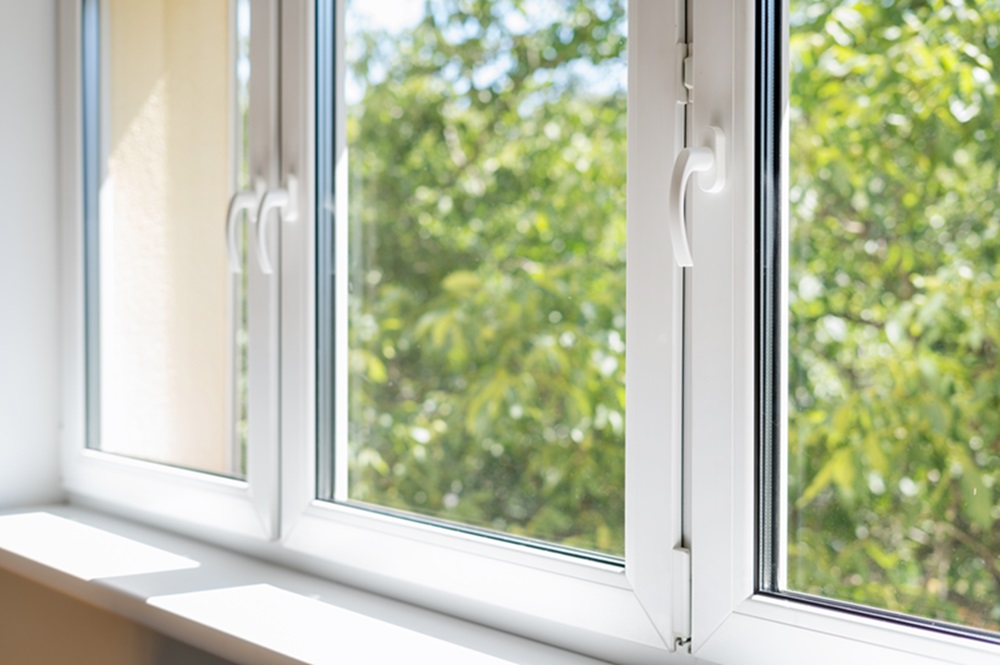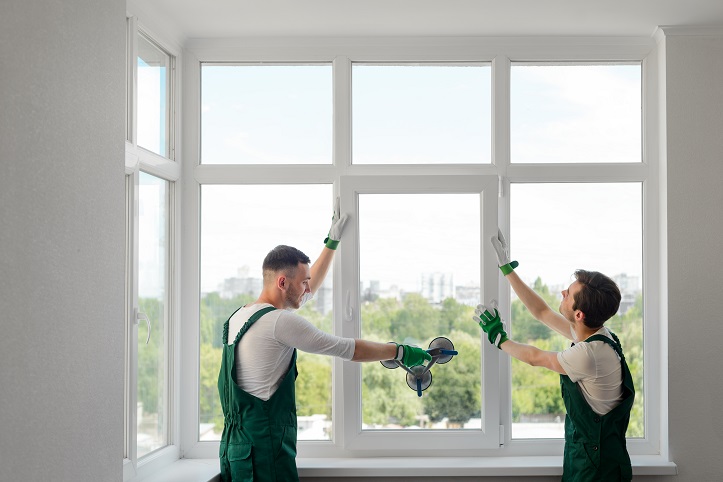Windows provide more than just a barrier between your home and the outside world; they enlighten our daily lives and tailor how you experience your home or workspace. Of course, there are many different types of windows, which can be made of many different types of window glass. These types of window glass range from common to specialized, and each has several potential applications. Since there are so many different glass types and applications, it’s important to know about them so you can select the right kinds of window glass for your safety, aesthetic, functionality, and energy efficiency needs.
Common Types of Window Glass
Float Glass
Float glass is one of the most common window glass types. The “float” moniker refers to how the glass is made; molten glass is poured from the furnace into a shallow tin bath. The molten glass floats on the tin so it can spread out evenly. Many more specialized and high-performance types of glass begin as float glass. Therefore, tons of applications in residential and commercial buildings such as glass window replacement employ the use of float glass.
Tempered Glass
Another common type of window glass is tempered glass. Also sometimes called ‘safety glass,’ tempered glass refers to glass that has gone through a specific tempering process after it’s been manufactured. During the tempering process, the outer surfaces of the glass are compressed via heat, which puts tension on the inner surfaces of the glass. The resulting glass is up to five times stronger than regular glass and breaks into tiny chunks instead of large, jagged edges. This way, tempered glass provides a much safer alternative to regular glass, especially when used in applications like glass tables, shower doors, and storefronts.
Laminated Glass
Laminated glass offers an additional window glass type commonly found in buildings. This type of architectural glass is also put through a specific lamination process. The process entails an interlayer material, typically EVA or PVB, sandwiched between two glass panels. The sandwich is then placed in a high-pressure chamber, where it experiences heat and pressure. This environment causes the interlayer to activate, chemically bonding with the glass panels it’s sandwiched between. Activated interlayers add insulation against UV light and sound to laminated glass. As a result, this window glass type is commonly used in car windshields and building facades.
Low-Emissivity (Low-E) Glass
Another common type of glass for buildings is low-emissivity, or low-e, glass. Emissivity refers to an object’s ability to radiate energy, and low-e glass has a very thin, transparent coating that reflects infrared energy, or heat. This makes low-e windows extremely energy-efficient windows, as the low-e coating acts like a thermos, reflecting the temperature inside so it’s easier to maintain. In fact, the Department of Energy states low-e glass can cut energy losses by up to 50%. This results in common uses for low-e glass in residential windows and energy-efficient buildings.
Specialized Types of Window Glass
Self-Cleaning Glass
One of the more interesting and convenient specialized window glass types is self-cleaning glass. This type of building glass uses two-stage window glass technology to clean itself. First, a photocatalytic reaction involving the sun’s rays breaks down dirt, mud, and other organic matter into smaller particles that are more easily removed. Second, a hydrophilic, or water-loving, coating on the glass causes rainwater to spread evenly over the glass instead of forming droplets. This way, the water creates a thin film that washes dirt away while also preventing streaks and dry spots. Of course, self-cleaning glass sees many applications as energy-efficient windows in hard-to-reach areas like high-rise buildings.
Tinted Glass
Another specialized type of window glass is tinted glass. In simplest terms, tinted glass is glass treated with a material to reduce the amount of light coming through it. There are several methods of tinting glass, from adding subtle colors to it during the manufacturing process to adding a film or coating after manufacturing. Either way, the result is the same: significant reductions in the sun’s glare and heat coming through the glass. Tinted glass is commonly used for these reasons in cars, offices, and window glass replacement for residential homes.
Smart Glass (Electrochromic Glass)
Smart glass, or electrochromic glass, provides an additional type of specialized glass for buildings. This specialized window glass technology contains liquid crystal molecules, which an electrical current can run through. When the current is active, the crystals align, allowing light to pass through and giving a clear glass appearance. When the current is inactive, the crystals scatter randomly, obscuring light and appearing as an opaque frosted glass. This provides significant energy savings, as well as privacy on demand. As a result, smart glass is used in many smart buildings and high-tech locations, such as offices and medical facilities.
Impact-Resistant Glass
One of the important specialized window glass types is impact-resistant glass, typically found in hurricane-prone areas. This type of glass employs a combination of tempered and laminated glass manufacturing techniques to withstand high winds and huge impacts from flying debris. If the glass does shatter, it’s tempered, so it will shatter into tiny pieces instead of large, jagged shards. In addition to its obvious use cases for hurricane-prone areas, impact-resistant glass also has security applications. If it can withstand hurricane-force debris, impact-resistant glass can also withstand attempts to break it and force entry. This makes it one of the safest types of architectural glass you can employ in your home or office.
Choosing the Right Window Glass
Of course, there’s a huge variety of types of window glass; it can be overwhelming to choose the right type for your needs. There are a few things to consider in order to make the right choice. For example, consider your local climate, applicable building codes, your budget, and any aesthetic preferences. If it matters to you, you also might want to consider the energy efficiency of certain glass types when making your selection. Keep any applicable safety requirements in mind, as well as how different types of building glass meet them. Finally, consider the balance between design and functionality when evaluating the right glass type for your needs.





